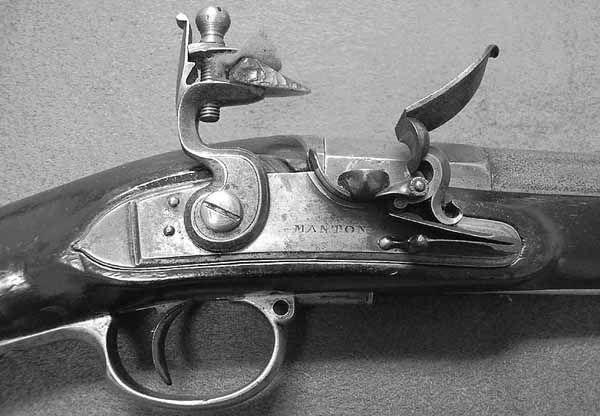BCarp
40 Cal.
- Joined
- Oct 30, 2004
- Messages
- 225
- Reaction score
- 102
I am purchasing this fowler at what I think is a good price. I don't have it in hand yet, as I'm making lay-away payments, but do have some detailed photos:
http://smg.photobucket.com/user/BCarp/library/Original Fowler
This is the seller's description:
"American Flintlock fowler, Lock marked 'RE' with plain walnut half-stock 57” overall and 37” inch .70 caliber round smoothbore barrel of twisted or Damascus steel. Has a prominent cheek piece on left side of stock, the breech has 2 gold bands. Hardware is iron with an engraved pineapple finial in front of the trigger guard, German silver escutcheon on stock wrist. Brass-tipped oak ramrod. Although plainly made the gun exhibits fine design and workmanship and a nice clean look and lines. Circa 1810-20."
I know little about guns of that period, but this screams English to me, though I suppose Americans built in a similar style. The "RE" on the lock appears to be part of a maker's name, the remainder worn away.
Anyways, comments please...!


http://smg.photobucket.com/user/BCarp/library/Original Fowler
This is the seller's description:
"American Flintlock fowler, Lock marked 'RE' with plain walnut half-stock 57” overall and 37” inch .70 caliber round smoothbore barrel of twisted or Damascus steel. Has a prominent cheek piece on left side of stock, the breech has 2 gold bands. Hardware is iron with an engraved pineapple finial in front of the trigger guard, German silver escutcheon on stock wrist. Brass-tipped oak ramrod. Although plainly made the gun exhibits fine design and workmanship and a nice clean look and lines. Circa 1810-20."
I know little about guns of that period, but this screams English to me, though I suppose Americans built in a similar style. The "RE" on the lock appears to be part of a maker's name, the remainder worn away.
Anyways, comments please...!


Last edited by a moderator:









